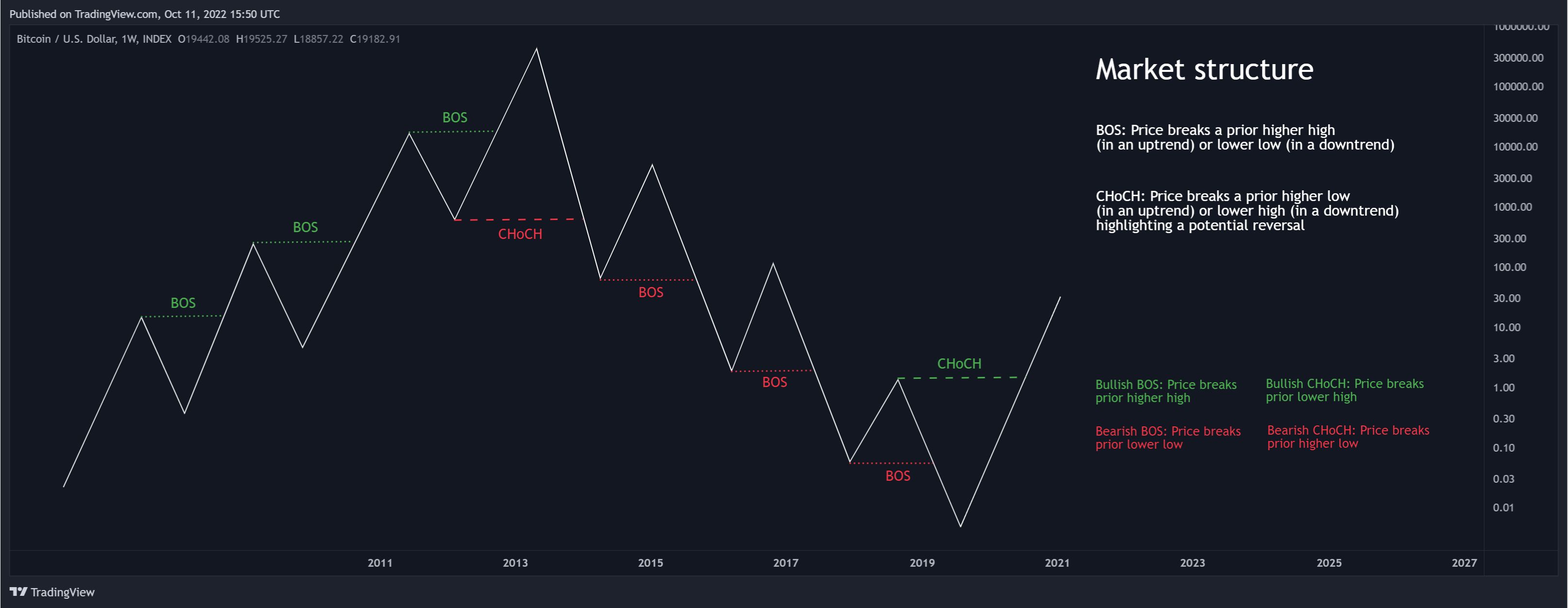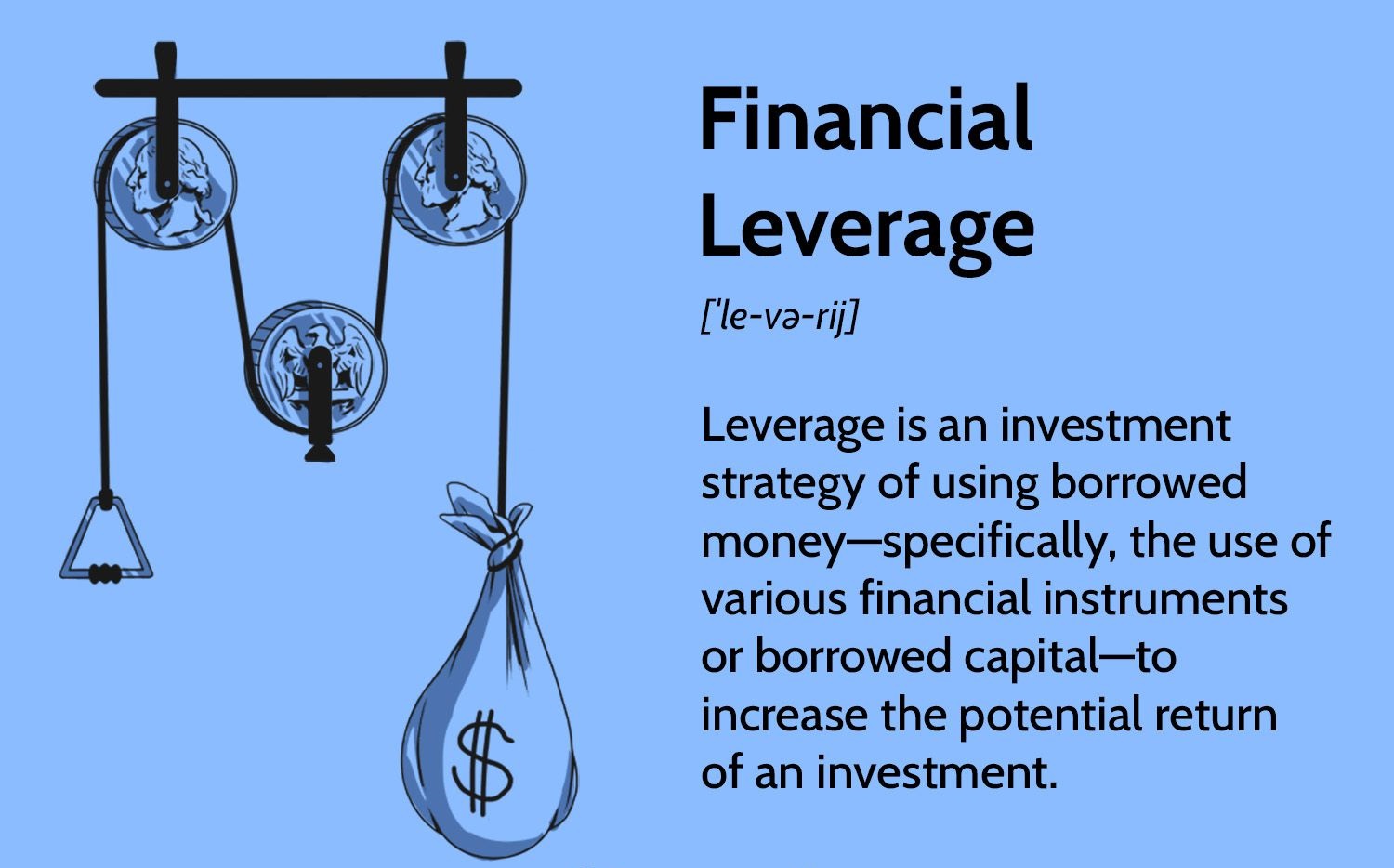Introduction
Welcome to the exciting world of investing! Whether you are a novice or an experienced investor, one thing remains the same – the importance of having a solid financial plan and clear goals in place. Investing without a well-thought-out strategy is akin to embarking on a journey without a map; you may end up lost and unsure of how to reach your destination.
Having a robust financial plan serves as a roadmap that guides your investment decisions, helping you stay focused, disciplined, and on track to achieve your financial objectives. Your financial plan takes into account your current financial situation, short-term and long-term goals, risk tolerance, and investment time horizon. It acts as a foundation for your investment journey, providing structure and direction.
Alongside a comprehensive financial plan, setting clear financial goals is equally crucial. These goals serve as the milestones along your investment journey, enabling you to measure your progress and make necessary adjustments along the way. Financial goals can range from buying a home, paying for education, saving for retirement, or simply achieving financial independence.
By aligning your investments with your financial plan and goals, you create a cohesive and purposeful approach to investing. This alignment ensures that your investment decisions are driven by your specific objectives, risk tolerance, and time horizon.
Investing with a focus on your financial plan and goals helps you achieve long-term financial security. It allows you to systematically grow your wealth while minimizing potential risks. Instead of chasing short-term market trends or succumbing to impulsive investment decisions, you can make informed choices that align with the bigger picture – your financial goals.
Furthermore, making investment decisions that are in line with your financial plan can help you maximize returns while minimizing risks. Your financial plan outlines the appropriate asset allocation and diversification strategy, taking into account your risk tolerance and investment timeframe. By following this plan, you can achieve a balanced portfolio that aims to deliver steady returns while mitigating risk.
Understanding Your Financial Plan
Before diving into the world of investments, it is essential to have a clear understanding of your financial plan. Your financial plan serves as a comprehensive overview of your current financial status, your future goals, and the strategies you will implement to achieve those goals.
A well-structured financial plan takes into account various aspects of your financial life, such as your income, expenses, assets, liabilities, and cash flow. It provides a detailed analysis of your current financial situation, helping you identify any areas that need improvement and opportunities for growth.
One of the primary components of a financial plan is creating a budget. A budget allows you to track your income and expenses, ensuring that you are living within your means and saving for your future goals. It helps to allocate your resources efficiently and make necessary adjustments to achieve your financial objectives.
Another critical aspect of your financial plan is assessing your risk tolerance. Your risk tolerance determines the level of volatility and uncertainty you are comfortable with regarding your investments. Understanding your risk tolerance helps you select appropriate investment vehicles that align with your comfort level and goals.
Furthermore, your financial plan should outline your investment goals. Whether you are aiming for short-term gains or long-term growth, defining your investment goals provides clarity on what you want to achieve through your investment journey. It helps you set realistic targets and measure your progress along the way.
In addition to investment goals, your financial plan should also consider your investment time horizon. Different goals may have different timeframes, such as buying a house in five years or planning for retirement in thirty years. Understanding your investment time horizon allows you to select investments that align with your specific timeframe, maximizing your potential for success.
Overall, having a thorough understanding of your financial plan is crucial to help you make informed investment decisions. It provides the necessary framework to align your investments with your financial goals, risk tolerance, and timeline. By regularly reviewing and updating your financial plan, you can ensure that your investments remain on track and in line with your overall financial strategy.
Setting Financial Goals
Setting clear financial goals is a vital step in your investment journey. Financial goals provide purpose and direction, helping you stay focused and motivated as you work towards achieving your desired outcomes. When setting financial goals, it is important to consider both short-term and long-term objectives.
Short-term goals are typically those that can be achieved within a year or two. These may include saving for a vacation, paying off credit card debt, or building an emergency fund. Short-term goals help create a sense of accomplishment and provide a solid foundation for your long-term financial success.
Long-term goals, on the other hand, are those that extend beyond several years or even decades. Examples of long-term goals include saving for retirement, purchasing a home, or funding your children’s education. These goals require careful planning, consistent saving, and strategic investment decisions.
When setting financial goals, it is essential to make them specific, measurable, achievable, relevant, and time-bound (SMART). A SMART goal provides clarity and enables you to track your progress effectively. For example, instead of setting a vague goal like “I want to save money,” a SMART goal would be “I will save $10,000 for a down payment on a house within 2 years.” This goal is specific, measurable, achievable, relevant, and time-bound.
Additionally, it is important to prioritize your financial goals. Determine which goals are most important to you and focus your resources on achieving them. By prioritizing your goals, you can allocate your time, energy, and financial resources more effectively.
Regularly reviewing and reassessing your goals is also crucial. As your financial situation and priorities may change over time, it is important to adapt your goals accordingly. By periodically evaluating and updating your financial goals, you ensure that they remain relevant and aligned with your current circumstances.
Moreover, it can be helpful to break down larger goals into smaller, manageable milestones. This allows you to celebrate progress along the way and maintain motivation. By achieving smaller milestones, you gain confidence and momentum to keep striving towards your ultimate financial goals.
Remember, setting financial goals is not a one-time event. It is an ongoing process that requires regular reflection, evaluation, and adjustment. By setting clear, SMART goals, you establish a roadmap for your financial success and provide a sense of purpose to your investment journey.
The Importance of Aligning Investments with Your Financial Plan and Goals
Aligning your investments with your financial plan and goals is a crucial step towards achieving long-term financial success. When your investments are in sync with your overall financial strategy, you are more likely to make informed decisions that support your objectives and mitigate unnecessary risks.
One of the key benefits of aligning investments with your financial plan and goals is the ability to achieve long-term financial security. By having a clear roadmap and following a well-defined plan, you can systematically build and grow your wealth over time. This approach helps you stay focused on your objectives, minimizing distractions and impulsive investment decisions.
Furthermore, aligning investments with your financial plan allows you to minimize risk and maximize returns. Your financial plan takes into account your risk tolerance, investment time horizon, and diversification strategy. By following this plan, you can create a carefully balanced portfolio that aims to deliver solid returns while mitigating potential risks.
Planning for retirement is another critical aspect that is addressed when aligning investments with your financial plan and goals. Your investment strategy should be in line with the timeline and income requirements of your retirement goals. By considering factors such as inflation, cost of living, and expected retirement age, you can make appropriate investment choices to build a retirement nest egg that supports your desired lifestyle.
Aligning investments with your financial plan and goals also helps in reducing financial stress. When you have a clear roadmap and an investment strategy that supports your objectives, you can feel more confident and at ease with your financial decisions. This can alleviate the anxiety and uncertainty that often come with managing investments.
Furthermore, following a well-defined financial plan increases the likelihood of investment success. By conducting thorough research, diversifying your portfolio, and staying disciplined in your approach, you position yourself for long-term growth and prosperity. Investing without a plan, on the other hand, can lead to haphazard decision-making and potentially detrimental outcomes.
Overall, aligning investments with your financial plan and goals is essential for long-term financial success. By having a clear roadmap, minimizing risk, planning for retirement, reducing financial stress, and increasing the likelihood of investment success, you set yourself up for a secure and prosperous financial future.
Achieving Long-Term Financial Security
One of the primary reasons for aligning your investments with your financial plan and goals is to achieve long-term financial security. By implementing a well-thought-out strategy, you can steadily and consistently build wealth over time, ensuring a secure financial future.
One key aspect of achieving long-term financial security is the power of compounding. By starting early and consistently investing in assets that appreciate or generate compounding returns, you can harness the exponential growth potential of your investments. The longer your money has time to compound, the greater the impact on your overall financial security.
Having a financial plan that aligns with your investments also allows you to make strategic decisions based on your risk tolerance and investment time horizon. A sound financial plan considers your goals and helps you determine the appropriate asset allocation and diversification strategy. This helps minimize unnecessary risks, ensuring that your investments are working for you in a way that aligns with your desired level of risk and desired timeline of returns.
Moreover, achieving long-term financial security requires discipline and consistency. By following a well-defined financial plan, you can stay focused on your goals and avoid making impulsive investment decisions. Consistently investing a portion of your income, rather than trying to time the market or chase short-term gains, allows you to take advantage of market cycles and accumulate wealth over time.
Another important factor in achieving long-term financial security is regularly reviewing and adjusting your financial plan. As your circumstances, goals, and market conditions change, it is essential to reassess and make necessary adjustments to your plan. This ensures that your investments remain aligned with your evolving financial situation and objectives.
In addition to regular reviews, it is important to stay informed about the financial markets and economic trends. Keeping up with market news and staying proactive in managing your investments can help you stay on track towards achieving long-term financial security. This can include monitoring the performance of different asset classes, evaluating investment options, and seeking professional advice when needed.
By aligning your investments with your financial plan and goals, you take proactive steps towards achieving long-term financial security. With the power of compounding, strategic decision-making, discipline, regular reviews, and staying informed, you can create a solid foundation for a financially secure future.
Minimizing Risk and Maximizing Returns
When it comes to investing, the goal is to minimize risk while maximizing returns. By aligning your investments with your financial plan and goals, you can achieve a balance between these two objectives and work towards building long-term wealth.
One of the key ways to minimize risk is through diversification. Diversifying your investment portfolio means spreading your funds across different asset classes, industries, and geographic regions. This helps reduce the impact of any single investment performing poorly, as losses in one area may be offset by gains in another. By diversifying, you can potentially protect yourself from severe losses and increase the overall stability of your portfolio.
In addition to diversification, understanding your risk tolerance is crucial. Your risk tolerance refers to your ability to withstand fluctuations in the value of your investments. By aligning your investments with your risk tolerance, you can create a portfolio that matches your comfort level. Investing too conservatively may limit growth potential, while investing too aggressively can expose you to unnecessary and excessive risk. Finding the right balance is key.
Furthermore, analyzing the historical performance of different investment options can help you make informed decisions. Researching the past returns, volatility, and risk levels of various asset classes and investment vehicles can provide valuable insights. While past performance is not a guarantee of future results, it can serve as a guide in understanding the potential risks and rewards of different investments.
Maximizing returns goes hand in hand with minimizing risk. By diversifying your portfolio and aligning your investments with your financial plan, you can potentially increase the likelihood of achieving higher returns. Your financial plan can outline an appropriate asset allocation strategy that considers your risk tolerance, investment time horizon, and overall financial goals.
Additionally, staying disciplined and avoiding emotional decision-making is crucial in maximizing returns. Market fluctuations and short-term volatility can often tempt investors to make impulsive decisions based on fear or greed. By sticking to your long-term investment plan and not succumbing to short-term market noise, you can avoid costly mistakes and potentially benefit from the growth potential of your investments in the long run.
Lastly, seeking professional advice can also be beneficial in minimizing risk and maximizing returns. A financial advisor or investment professional can provide guidance based on their expertise and knowledge of the market. They can help you assess your risk tolerance, determine suitable investment options, and monitor the performance of your portfolio to ensure it remains aligned with your overall financial plan.
Overall, by aligning your investments with your financial plan and goals, you can strike a balance between minimizing risk and maximizing returns. Through diversification, understanding risk tolerance, analyzing historical performance, staying disciplined, and seeking professional advice when needed, you can work towards building a portfolio that supports your financial objectives while managing risk effectively.
Planning for Retirement
One significant aspect of aligning investments with your financial plan is planning for retirement. Retirement planning involves understanding your financial goals and determining the income you will need in your post-working years. By aligning your investments with your retirement plan, you can work towards securing a comfortable and financially stable retirement.
One of the key factors to consider when planning for retirement is your desired retirement lifestyle. This includes determining your anticipated expenses during retirement, such as housing, healthcare, travel, and leisure activities. Understanding your projected expenses will help you estimate the income you will require to support your desired lifestyle.
Aligning investments with your retirement plan also involves considering your investment time horizon. The length of time until your retirement will influence your investment strategies. Generally, the longer your investment time horizon, the more aggressively you can invest to potentially generate higher returns. As you near retirement, it is advisable to gradually shift towards more conservative investments to preserve your wealth.
Another crucial aspect of planning for retirement is considering the impact of inflation on your savings. Inflation erodes the purchasing power of your money over time. Therefore, it is essential to invest in assets that have the potential to outpace inflation and maintain the value of your savings. Aligning your investments with your retirement plan can help ensure that you are taking inflation into account and positioning your portfolio accordingly.
Furthermore, retirement planning involves understanding and utilizing tax-advantaged retirement accounts, such as individual retirement accounts (IRA) or workplace retirement plans like 401(k)s. These accounts offer tax benefits and incentives to save for retirement, allowing your investments to grow more efficiently. By aligning your investments with these retirement accounts, you can take advantage of the tax benefits and optimize your savings.
Regularly reviewing and adjusting your retirement plan is crucial to ensure that you stay on track. As your circumstances, goals, and market conditions change, you may need to make adjustments to your retirement savings strategy. By monitoring your progress and making necessary modifications, you can ensure that your investments continue to align with your retirement goals.
In summary, planning for retirement and aligning your investments with your retirement plan are essential for ensuring a financially secure future. By considering factors such as your desired retirement lifestyle, investment time horizon, inflation, tax-advantaged retirement accounts, and regularly revisiting your retirement plan, you can work towards building a nest egg that will support you during your golden years.
Reducing Financial Stress
Aligning your investments with your financial plan and goals can play a significant role in reducing financial stress. Financial stress often stems from uncertainty and a lack of control over your financial situation. By having a clear roadmap and investment strategy in place, you can gain a sense of control and peace of mind.
One of the ways aligning your investments can reduce financial stress is by providing a sense of direction and purpose. When you have a financial plan and specific goals, it gives you a clear idea of what you are working towards and why. This clarity helps alleviate the anxiety that comes with uncertainty, allowing you to focus on taking the necessary steps to achieve your financial objectives.
Moreover, aligning your investments with your financial plan allows you to create a strategy that aligns with your risk tolerance and investment time horizon. This helps you avoid making impulsive decisions based on fear or market fluctuations. By following a well-defined plan, you can stay disciplined and confident in your investment decisions, reducing the stress associated with volatility and uncertainty.
Another benefit of aligning your investments is the potential to achieve a more stable and consistent financial growth over time. By diversifying your portfolio and following a long-term investment strategy, you can smooth out the fluctuations in the market. This helps reduce the stress of experiencing significant losses during market downturns and allows you to have a more stable and predictable financial future.
Furthermore, aligning investments with your financial plan helps in making informed decisions and avoiding financial pitfalls. A well-planned investment strategy takes into account your financial goals, risk tolerance, and investment time horizon. It guides you towards suitable investment options and helps you avoid investment choices that may not align with your overall financial objectives.
Seeking professional guidance can also contribute to reducing financial stress. A financial advisor or investment professional can provide valuable insights, expertise, and guidance to help you navigate the complex world of investing. Having an expert by your side can alleviate the stress of making investment decisions on your own and provide a sense of security and reassurance.
Overall, aligning your investments with your financial plan and goals can significantly reduce financial stress. By providing direction, aligning with your risk tolerance, ensuring stable growth, guiding informed decisions, and seeking professional guidance, you can create a solid foundation for a less stressful and more secure financial future.
Higher Likelihood of Success
Aligning your investments with your financial plan and goals significantly increases your likelihood of investment success. By following a well-defined strategy and staying true to your objectives, you set yourself up for a more fruitful and profitable investment journey.
One of the key benefits of aligning investments with your financial plan is the ability to stay focused. Your financial plan acts as a roadmap that guides your investment decisions, ensuring that you remain on track and avoid unnecessary diversions. This focus helps you make consistent and disciplined investment choices, increasing your chances of long-term success.
Moreover, aligning investments with your financial plan allows you to align your risk tolerance with appropriate investment strategies. By understanding your risk tolerance and investing accordingly, you can avoid taking unnecessary risks or being overly conservative. This ensures that your investment choices are in line with your comfort level, increasing the likelihood of achieving your financial goals.
Furthermore, aligning investments with your financial plan helps you make informed decisions. Your financial plan outlines the specific goals, timeframes, and risk management strategies that you should consider when making investment choices. Following this plan ensures that you conduct thorough research, analyze the potential risks and rewards, and select investments that align with your overall financial objectives.
In addition, aligning investments with your financial plan helps you take advantage of market opportunities. By having a clear strategy, you can identify investment options that are in line with your goals and time horizon. This allows you to capitalize on market trends and potential growth areas, increasing the likelihood of achieving favorable returns.
Having a well-thought-out financial plan also helps you navigate challenging market conditions. No investment journey is without its ups and downs, and aligning investments with your financial plan provides a framework for making resilient decisions during market turbulence. By staying focused on your long-term goals and maintaining a diversified portfolio, you can weather market fluctuations and preserve your wealth.
Seeking professional advice can further enhance your likelihood of investment success. An experienced financial advisor or investment professional can provide valuable insights, guidance, and expertise. They can help you assess your financial goals, determine appropriate investment strategies, and serve as a sounding board for investment decisions. By leveraging their knowledge and expertise, you increase the chances of making sound investment choices.
In summary, aligning investments with your financial plan and goals significantly increases your likelihood of investment success. By staying focused, matching your investment strategies to your risk tolerance, making informed decisions, seizing market opportunities, navigating market challenges, and seeking professional advice, you can build a solid foundation for a successful and prosperous investment journey.
Conclusion
Aligning your investments with your financial plan and goals is crucial for long-term financial success. It provides a roadmap and a sense of direction, helping you make informed and strategic investment decisions. By understanding your financial plan, setting clear goals, and ensuring that your investments are in line with these objectives, you can achieve a higher likelihood of success.
Aligning investments with your financial plan allows you to achieve long-term financial security. It helps you grow your wealth systematically and minimize unnecessary risks. By following a well-defined plan, you can maximize returns while staying disciplined and focused on your goals.
Additionally, aligning investments with your financial plan and goals reduces financial stress. It provides a sense of control and allows you to make decisions based on a clear strategy, minimizing anxiety and uncertainty. By having a roadmap and a well-thought-out plan, you can navigate investment challenges and market fluctuations with confidence.
Moreover, aligning investments with your financial plan helps you plan for retirement effectively. By considering factors such as your desired retirement lifestyle, investment time horizon, and inflation, you can build a retirement nest egg that supports your future needs.
Furthermore, aligning investments with your financial plan increases the likelihood of minimizing risk and maximizing returns. By diversifying your portfolio, understanding your risk tolerance, and making informed decisions, you can optimize your investment outcomes and achieve a balance between risk and reward.
In conclusion, aligning your investments with your financial plan and goals is crucial for a successful investment journey. By having a clear roadmap, staying disciplined, mitigating risks, reducing financial stress, planning for retirement, and maximizing returns, you can build a solid foundation for long-term financial success. Remember, it is essential to regularly review and update your financial plan to ensure that it remains aligned with your evolving needs and goals. Seek professional advice when needed and stay focused on your objectives to achieve the financial future you desire.

























